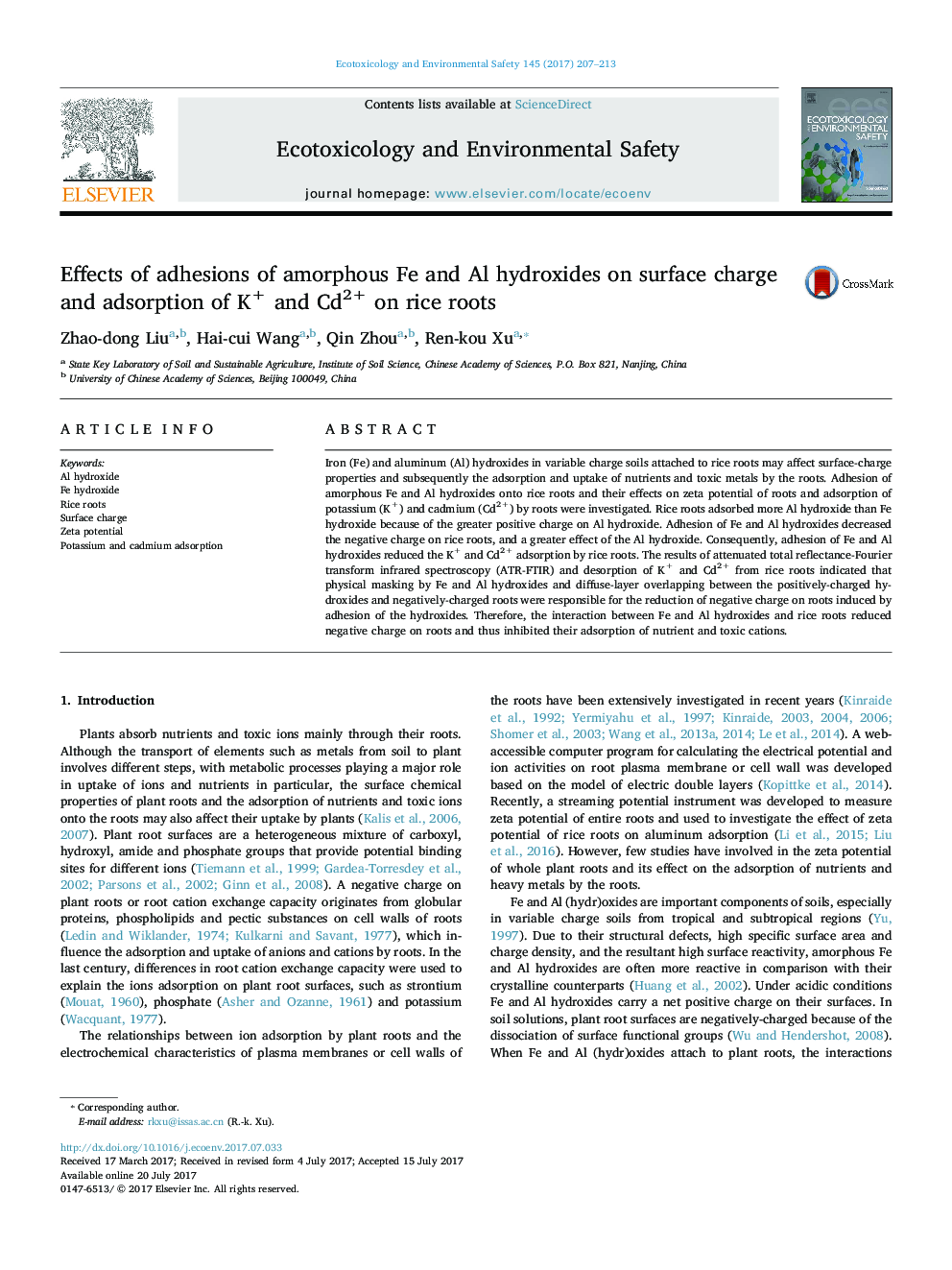| Article ID | Journal | Published Year | Pages | File Type |
|---|---|---|---|---|
| 5747749 | Ecotoxicology and Environmental Safety | 2017 | 7 Pages |
â¢Adhesions of Fe and Al hydroxides decreased negative charge on rice roots.â¢Adhesions of Fe and Al hydroxides decreased adsorption of K+ and Cd2+ by rice roots.â¢Physical mask and diffuse layer overlapping were responsible for charge variation.â¢Adhesions of Fe and Al hydroxides enhanced cation desorption from rice roots.â¢Cation desorption experiments confirmed diffuse layer overlapping on rice roots.
Iron (Fe) and aluminum (Al) hydroxides in variable charge soils attached to rice roots may affect surface-charge properties and subsequently the adsorption and uptake of nutrients and toxic metals by the roots. Adhesion of amorphous Fe and Al hydroxides onto rice roots and their effects on zeta potential of roots and adsorption of potassium (K+) and cadmium (Cd2+) by roots were investigated. Rice roots adsorbed more Al hydroxide than Fe hydroxide because of the greater positive charge on Al hydroxide. Adhesion of Fe and Al hydroxides decreased the negative charge on rice roots, and a greater effect of the Al hydroxide. Consequently, adhesion of Fe and Al hydroxides reduced the K+ and Cd2+ adsorption by rice roots. The results of attenuated total reflectance-Fourier transform infrared spectroscopy (ATR-FTIR) and desorption of K+ and Cd2+ from rice roots indicated that physical masking by Fe and Al hydroxides and diffuse-layer overlapping between the positively-charged hydroxides and negatively-charged roots were responsible for the reduction of negative charge on roots induced by adhesion of the hydroxides. Therefore, the interaction between Fe and Al hydroxides and rice roots reduced negative charge on roots and thus inhibited their adsorption of nutrient and toxic cations.
Graphical abstractDownload high-res image (164KB)Download full-size image
